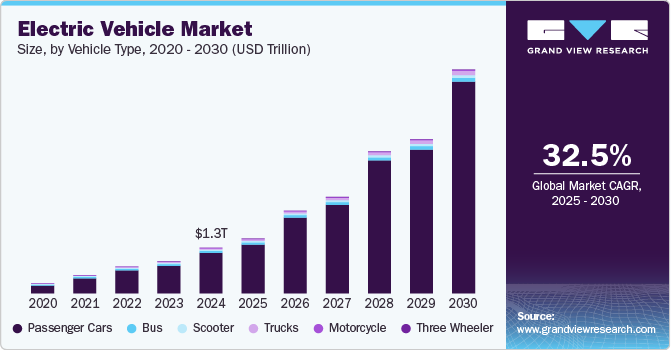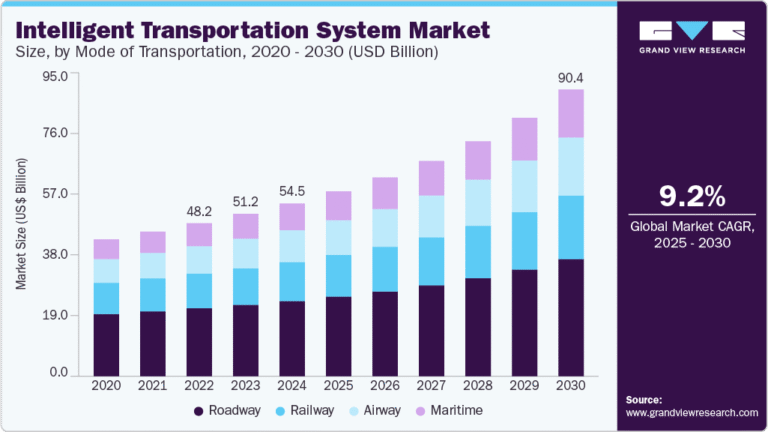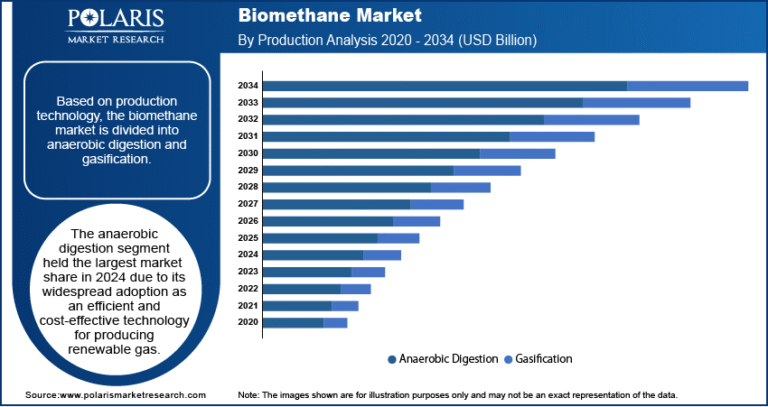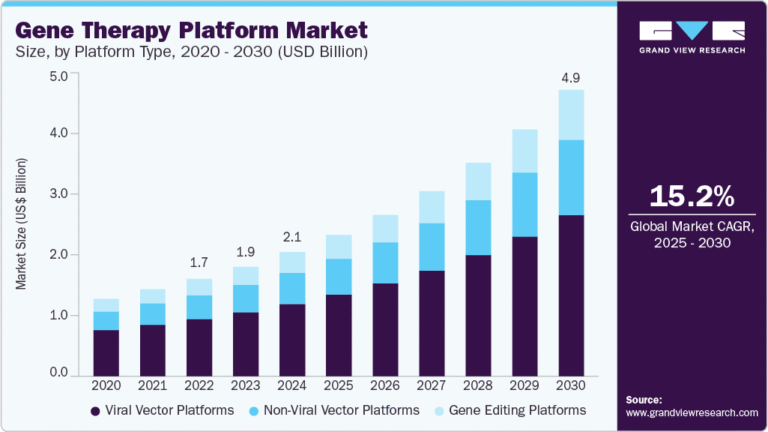Electric Vehicle Market Size, Share & Trends Analysis growing at a CAGR of 32.5% from 2025 to 2030

The global electric vehicle market size was estimated at USD 1,328.08 billion in 2024 and is projected to reach USD 6,523.97 billion by 2030, growing at a CAGR of 32.5% from 2025 to 2030. Government policies and incentives worldwide are accelerating the adoption of Electric Vehicles (EVs).
Key Market Trends & Insights
- The North America electric vehicle market is expected to grow at a moderate CAGR during the forecast period.
- The U.S. electric vehicle market is expected to grow at the fastest CAGR during the forecast period
- By propulsion, the battery electric vehicle segment dominated the market in 2024..
- By drive type type, the front-wheel drive segment dominated the market in 2024.
- By vehicle speed, the 100MPH-125MPH segment dominated the market in 2024.
Market Size & Forecast
- 2024 Market Size: USD 1,328.08 Billion
- 2030 Projected Market Size: USD 6,523.97 Billion
- CAGR (2025-2030): 32.5%
- Asia Pacific: Largest market in 2024
Request a free sample copy or view report summary: https://www.grandviewresearch.com/industry-analysis/electric-vehicles-ev-market/request/rs1
Many countries are implementing stringent emission regulations and providing subsidies, tax benefits, and other incentives to both consumers and manufacturers, encouraging the shift from internal combustion engine vehicles to electric alternatives. Besides, advancements in battery technology are significantly enhancing the range, performance, and affordability of EVs. Innovations such as solid-state batteries and improvements in lithium-ion batteries are reducing costs and increasing energy density, making EVs more appealing to consumers.
The expansion of the transportation and logistics sectors significantly drives the rising demand for EVs. As global trade and e-commerce continue to surge, there is an increased need for efficient and sustainable transportation solutions. Electric vehicles offer a promising alternative to traditional internal combustion engines, as they produce lower emissions and reduce operational costs. This shift is particularly evident in urban areas where delivery services are increasing, and the need to mitigate air pollution is critical. Consequently, logistics companies are increasingly integrating electric vans and trucks into their fleets, driven by both regulatory pressures and the economic benefits of lower fuel and maintenance expenses. For instance, in May 2024, Amazon deployed heavy-duty electric trucks across Southern California for freight operations. The introduction of the 50 heavy-duty electric trucks in the region is a step towards decarbonization through first, middle, and last-mile delivery.





